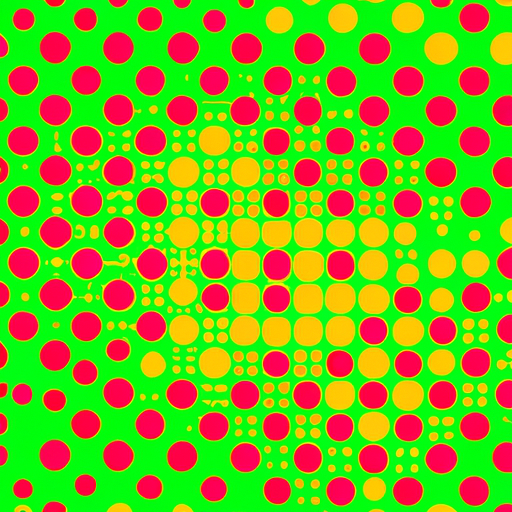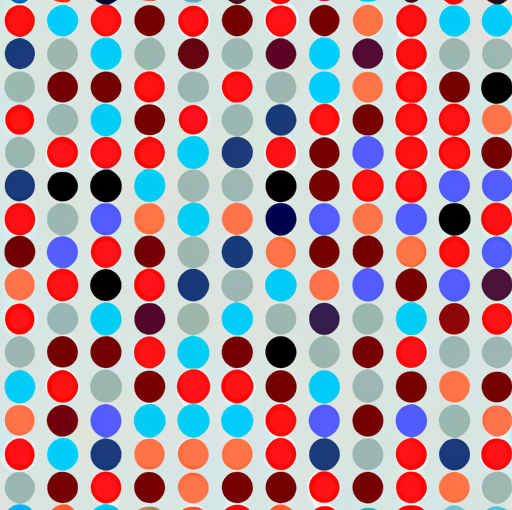-
LucksCasino.com Online - Live Casino ,Blackjack, Roulette, Slots, Mobile Phone Gambling & Bets: Professional Article Collection
- Introduction
- Introduction to Polkadot
- The Benefits of Using Polkadot for Cross-Chain Communication
- How Polkadot is Revolutionizing the Blockchain Industry
- Polkadot vs Ethereum: A Comparison
- The Role of DOT Tokens in the Polkadot Ecosystem
- Polkadot's Consensus Mechanism Explained
- The Future of Decentralized Finance on Polkadot
- Polkadot's Interoperability with Other Blockchains
- The Importance of Governance in the Polkadot Network
- Polkadot's Scalability Solutions for High-Volume Transactions
- How to Build a DApp on the Polkadot Network
- Investing in DOT: The Potential ROI and Risks
- Interview with Gavin Wood, Founder of Polkadot
- Q&A
- Conclusion
"Join, scale, and innovate with Polkadot's interoperable blockchain community."
Introduction
Polkadot is a subsequent-era blockchain protocol that goals to attach a number of specialised blockchains into one unified community. It was created by Gavin Wooden, co-founding father of Ethereum, and launched in 2020. Polkadot's distinctive structure permits for interoperability between completely different blockchains, enabling them to speak and share knowledge securely and effectively. This opens up new potentialities for decentralized purposes and providers, in addition to bettering scalability and decreasing transaction prices.
Introduction to Polkadot
Polkadot is a subsequent-era blockchain platform that goals to unravel the scalability and interoperability points confronted by present blockchain networks. It was created by Gavin Wooden, one of many co-founders of Ethereum, and was launched in Might 2020.
The Polkadot community is designed to be a multi-chain system that enables completely different blockchains to speak with every other seamlessly. Which means that builders can create their very own customized blockchains and join them to the Polkadot community, enabling them to share knowledge and property with other chains on the community.
One of many key features of Polkadot is its capacity to scale horizontally. Which means that as more customers be part of the community, new parachains (parallel chains) can be added to extend the community's capability. This is in distinction to conventional blockchain networks like Bitcoin and Ethereum, which have restricted capability and wrestle to deal with high transaction volumes.
One other necessary facet of Polkadot is its governance mannequin. The community is ruled by token holders who can vote on proposals for adjustments or upgrades to the community. This ensures that choices are made democratically and transparently, with none central authority controlling the community.
Polkadot additionally has its personal native cryptocurrency referred to as DOT. DOT tokens are used for staking, which is a course of the place customers lock up their tokens as collateral in order to validate transactions on the community. In return for staking their tokens, customers obtain rewards in the type of more DOT tokens.
General, Polkadot represents a major step ahead for blockchain know-how. Its modern design permits for higher scalability and interoperability between completely different blockchains, whereas its democratic governance mannequin ensures that choices are made in a fair and clear method. As more builders start constructing on top of Polkadot, we can anticipate to see even more thrilling use circumstances emerge in the years forward.
The Advantages of Utilizing Polkadot for Cross-Chain Communication
Polkadot is a blockchain know-how that has been gaining recognition in current years. It is a platform that enables for cross-chain communication, which signifies that completely different blockchains can talk with every other seamlessly. This is a major growth in the world of blockchain know-how as a result of it solves one of many largest issues going through the industry: interoperability.
Interoperability refers back to the capacity of various blockchains to speak with every other. At present, most blockchains function independently, which signifies that they can not share knowledge or property with every other. This creates a fragmented ecosystem the place customers have to make use of completely different blockchains for various functions, and there is no straightforward method to switch property between them.
Polkadot solves this problem by making a community of interconnected blockchains. It permits for cross-chain communication through the use of a singular structure referred to as a relay chain. The relay chain acts as a bridge between completely different blockchains, permitting them to speak with every other and share knowledge and property.
One of many primary advantages of utilizing Polkadot for cross-chain communication is elevated effectivity. With Polkadot, customers can switch property between completely different blockchains shortly and simply. Which means that they can make the most of the distinctive features provided by every blockchain with out having to change between them continually.
One other good thing about utilizing Polkadot is elevated security. As a result of all transactions on Polkadot are verified by a number of validators, it is much tougher for unhealthy actors to control the system. This makes it a more secure platform for transferring property than conventional strategies.
Polkadot additionally offers higher flexibility than conventional blockchain platforms. With Polkadot, builders can create their very own customized blockchains and join them to the community simply. Which means that they can create specialised blockchains for particular use circumstances with out having to fret about interoperability points.
Along with these advantages, Polkadot additionally offers higher scalability than conventional blockchain platforms. As a result of it makes use of a sharding mechanism, it can course of more transactions per second than other platforms. This makes it ultimate for purposes that require high throughput, resembling gaming or finance.
General, Polkadot is an thrilling growth in the world of blockchain know-how. Its capacity to facilitate cross-chain communication solves one of many largest issues going through the industry at this time: interoperability. By making a community of interconnected blockchains, Polkadot offers elevated effectivity, security, flexibility, and scalability in comparison with conventional blockchain platforms.
As more builders start to undertake Polkadot as their preferred platform for constructing decentralized purposes (dApps), we can anticipate to see even more innovation in this area in the approaching years. Whether or not you're an investor searching for new alternatives or a developer searching for a greater method to construct dApps, Polkadot is positively value keeping track of in the years forward.
How Polkadot is Revolutionizing the Blockchain Industry
Polkadot is a blockchain know-how that has been making waves in the industry since its launch in 2020. It is a singular platform that enables completely different blockchains to speak with every other, making a community of interconnected chains. This innovation has the potential to revolutionize the blockchain industry by fixing a few of its most urgent points.
One of many primary issues with conventional blockchains is their lack of interoperability. Every blockchain operates independently, making it troublesome for them to speak and share knowledge. This creates silos of information that aren't simply accessible to other networks. Polkadot solves this problem by permitting completely different blockchains to attach and work together with every other seamlessly.
One other situation with conventional blockchains is scalability. As more customers be part of the community, the system turns into slower and fewer environment friendly. Polkadot addresses this problem through the use of a sharding mechanism that divides the community into smaller teams referred to as parachains. Every parachain can course of transactions independently, growing the general velocity and effectivity of the community.
Polkadot additionally offers higher security than conventional blockchains. Its distinctive consensus mechanism, referred to as Nominated Proof-of-Stake (NPoS), permits token holders to appoint validators who will secure the community and validate transactions. This method ensures that solely reliable validators are chosen, decreasing the risk of assaults or malicious habits.
Along with these advantages, Polkadot additionally offers higher flexibility for builders. It helps a number of programming languages, making it simpler for builders to construct purposes on top of the platform. It additionally permits for upgrades and adjustments with out requiring a tough fork, which can be disruptive to the community.
General, Polkadot's modern strategy to blockchain know-how has the potential to rework how we take into consideration decentralized networks. Its capacity to attach completely different blockchains and improve scalability whereas sustaining security makes it a pretty choice for companies and builders alike.
One instance of how Polkadot is getting used in follow is by means of its partnership with KILT Protocol, a blockchain-based mostly id verification system. KILT makes use of Polkadot's infrastructure to create a secure and decentralized method for people and organizations to confirm their identities with out counting on centralized authorities.
One other instance is Acala Community, a decentralized finance (DeFi) platform constructed on top of Polkadot. Acala offers customers entry to stablecoins, lending markets, and other monetary providers in a secure and clear method.




As more initiatives are developed on top of Polkadot's infrastructure, we can anticipate to see even more innovation in the blockchain industry. Its capacity to unravel a number of the most urgent points going through conventional blockchains makes it an thrilling know-how with monumental potential.
In conclusion, Polkadot is revolutionizing the blockchain industry by providing higher interoperability, scalability, security, and suppleness than conventional blockchains. Its modern strategy has already attracted quite a few partnerships and initiatives which are leveraging its infrastructure for real-world use circumstances. As more companies and builders undertake this know-how, we can anticipate to see even more transformative purposes emerge in the years forward.
Polkadot vs Ethereum: A Comparability
Polkadot vs Ethereum: A Comparability
Cryptocurrencies have been round for over a decade now, and so they continue to evolve with new applied sciences and improvements. Two of the preferred cryptocurrencies in the market at this time are Polkadot and Ethereum. Each of those platforms offer distinctive features that make them stand out from every other. On this article, we are going to evaluate Polkadot and Ethereum to help you perceive their variations.
What is Polkadot?
Polkadot is a blockchain platform that was created by Gavin Wooden, one of many co-founders of Ethereum. The platform goals to unravel a number of the scalability points confronted by other blockchain networks. It does this by permitting a number of blockchains to function collectively in a single community, which is often called a "parachain." Which means that builders can create their very own blockchain purposes on Polkadot with out having to fret about scalability points.
What is Ethereum?
Ethereum is a decentralized platform that enables builders to construct decentralized purposes (dApps) on its blockchain community. It was created by Vitalik Buterin in 2015 and has since turn into one of the crucial fashionable cryptocurrencies in the market. Ethereum's primary function is its sensible contract performance, which permits builders to create self-executing contracts that can be used for numerous functions.
Scalability
One of many largest variations between Polkadot and Ethereum is their strategy to scalability. As talked about earlier, Polkadot solves scalability points by permitting a number of blockchains to function collectively in a single community. Which means that it can deal with more transactions per second than Ethereum, which operates on a single blockchain.
Ethereum has been engaged on bettering its scalability by means of numerous upgrades resembling sharding and the transition from proof-of-work (PoW) to proof-of-stake (PoS). Nonetheless, these upgrades are nonetheless in progress, and it may take a while earlier than they're totally applied.
Interoperability
One other key distinction between Polkadot and Ethereum is their strategy to interoperability. Polkadot's parachain structure permits completely different blockchains to speak with every other seamlessly. Which means that builders can create purposes on completely different blockchains and nonetheless have them work collectively on the identical community.
Ethereum additionally offers interoperability by means of its sensible contract performance. Builders can create sensible contracts that work together with other sensible contracts on completely different blockchains. Nonetheless, this requires more effort than utilizing Polkadot's parachain structure.
Governance
Polkadot has a singular governance system that enables token holders to vote on proposals for adjustments or upgrades to the community. This ensures that choices are made democratically and transparently.
Ethereum additionally has a governance system nevertheless it operates otherwise from Polkadot's system. In Ethereum, choices are made by means of neighborhood consensus reasonably than token holder voting.
Conclusion
In conclusion, each Polkadot and Ethereum offer distinctive features that make them stand out from every other. Whereas Polkadot focuses on fixing scalability points by means of its parachain structure, Ethereum offers sensible contract performance for constructing dApps. Moreover, whereas each platforms offer interoperability, they differ in their strategy to governance.
In the end, the selection between Polkadot and Ethereum is determined by your particular needs as a developer or person. If you happen to require high scalability or wish to construct purposes throughout a number of blockchains seamlessly, then Polkadot may be the higher choice for you. On the other hand, in the event you want sensible contract performance or desire neighborhood-pushed determination-making processes, then Ethereum may be more appropriate to your needs.
The Position of DOT Tokens in the Polkadot Ecosystem
Polkadot is a blockchain platform that goals to supply interoperability between completely different blockchains. It was created by Gavin Wooden, one of many co-founders of Ethereum. Polkadot makes use of a singular structure that enables a number of blockchains to function in parallel, whereas nonetheless with the ability to talk with every other.
The Polkadot ecosystem is powered by DOT tokens, that are used for numerous functions throughout the community. On this article, we are going to discover the function of DOT tokens in the Polkadot ecosystem.
Firstly, DOT tokens are used for staking. Staking is the method of holding a certain quantity of tokens in order to take part in the community and earn rewards. In Polkadot, staking is used to secure the community and validate transactions. Validators are responsible for verifying transactions and including them to the blockchain. They're rewarded with newly minted DOT tokens for his or her work.
So as to turn into a validator, one should stake a certain quantity of DOT tokens. The more tokens one stakes, the upper their possibilities of being chosen as a validator. Nonetheless, if a validator behaves maliciously or fails to carry out their duties correctly, they can lose their staked tokens as a penalty.
Secondly, DOT tokens are used for governance. Governance refers back to the course of of constructing choices about how the community ought to function and evolve over time. In Polkadot, token holders have the power to vote on proposals that have an effect on the community.
Proposals can vary from technical upgrades to adjustments in community parameters resembling transaction charges or block sizes. To ensure that a proposal to be authorised, it should obtain a certain share of votes from token holders. The more DOT tokens one holds, the more voting energy they've.
Thirdly, DOT tokens are used for bonding parachains. Parachains are unbiased blockchains that run on top of Polkadot’s primary chain. To ensure that a parachain to be added to the community, it should first bond a certain quantity of DOT tokens.
Bonding entails locking up DOT tokens for a time frame in order to exhibit dedication to the community. As soon as a parachain has been bonded, it can start processing transactions and interacting with other parachains on the community.
Lastly, DOT tokens are used for transaction charges. Every time somebody sends a transaction on Polkadot, they have to pay a small price in DOT tokens. This price is used to incentivize validators to include transactions in blocks and course of them shortly.
In conclusion, DOT tokens play an necessary function in the Polkadot ecosystem. They're used for staking, governance, bonding parachains and paying transaction charges. As more purposes are constructed on top of Polkadot’s infrastructure and more customers be part of the community, demand for DOT tokens is more likely to improve. This might result in a rise in worth for individuals who maintain them in addition to additional development and growth throughout the ecosystem itself.
Polkadot's Consensus Mechanism Defined
Polkadot's Consensus Mechanism Defined
Polkadot is a subsequent-era blockchain platform that goals to unravel the scalability and interoperability points confronted by present blockchain networks. It was created by Gavin Wooden, one of many co-founders of Ethereum, and launched in Might 2020. Polkadot makes use of a singular consensus mechanism referred to as "Nominated Proof-of-Stake" (NPoS) to realize its objectives.
On this article, we are going to clarify how Polkadot's NPoS consensus mechanism works and why it is necessary for the community's security and efficiency.
What is Nominated Proof-of-Stake?
Proof-of-Stake (PoS) is a consensus mechanism utilized by many blockchain networks, together with Ethereum 2.0. In PoS, validators are chosen to create new blocks based mostly on their stake in the community. The more tokens they maintain, the upper their possibilities of being chosen as validators.
Nonetheless, PoS has some limitations. For instance, it can result in centralization if a couple of massive token holders management a lot of the community's stake. It can even be weak to assaults if a validator with a big stake decides to behave maliciously.
To deal with these points, Polkadot launched Nominated Proof-of-Stake (NPoS). In NPoS, token holders can nominate validators to create new blocks on their behalf. Validators are then chosen based mostly on each their very own stake and the stake of those that nominated them.
This method incentivizes decentralization as a result of it permits small token holders to take part in block creation by nominating validators they belief. It additionally makes it tougher for any single validator or group of validators to regulate the community as a result of they should have support from a good portion of token holders.
How does NPoS work in follow?
To turn into a validator on Polkadot, you must first turn into a candidate by staking not less than 16 DOT tokens (the native token of Polkadot). As soon as you're a candidate, you can be nominated by other token holders who belief you to behave truthfully and effectively.
The top 300 candidates with the very best whole stake (together with each self-staked and nominated stake) turn into energetic validators and begin creating new blocks. They obtain rewards in DOT tokens for doing so.
If a validator misbehaves or goes offline for an prolonged time frame, they can be slashed - meaning they lose a part of their stake as punishment. This ensures that validators have an incentive to behave truthfully and keep good efficiency.
Token holders can change their nominations at any time in the event that they now not belief a validator or wish to support another person as an alternative. This enables for dynamic participation in block creation and helps stop centralization.
Why is NPoS necessary for Polkadot?
NPoS is essential for Polkadot as a result of it allows the community's distinctive features resembling cross-chain interoperability and shared security between parachains (unbiased blockchains that run on top of Polkadot).
Cross-chain interoperability signifies that completely different blockchains can talk with every other seamlessly without having complicated bridges or intermediaries. This is doable as a result of all parachains on Polkadot share the identical security mannequin - meaning that all of them depend on the identical set of validators chosen by means of NPoS.
Shared security additionally signifies that smaller parachains can profit from the security offered by bigger ones without having to draw their very own set of validators. This reduces prices and complexity for builders constructing on Polkadot.
In conclusion, Nominated Proof-of-Stake is an modern consensus mechanism that addresses a number of the limitations of conventional PoS whereas enabling distinctive features like cross-chain interoperability and shared security. It incentivizes decentralization and participation from small token holders whereas sustaining high ranges of security and efficiency for the community as an entire.
The Way forward for Decentralized Finance on Polkadot
Decentralized finance, or DeFi, has been gaining traction in current years as a substitute for conventional monetary systems. DeFi permits for peer-to-peer transactions with out the necessity for intermediaries resembling banks or other monetary establishments. Probably the most promising platforms for DeFi is Polkadot.
Polkadot is a blockchain platform that enables for interoperability between completely different blockchains. Which means that completely different blockchains can talk with every other and share knowledge, making a more related and environment friendly ecosystem. Polkadot was created by Gavin Wooden, one of many co-founders of Ethereum, and has shortly turn into one of the crucial fashionable blockchain platforms in the world.
One of many primary benefits of Polkadot is its scalability. Not like other blockchain platforms which have restricted capability for transactions, Polkadot can deal with 1000's of transactions per second. This makes it ultimate for DeFi purposes that require quick and environment friendly processing.
One other benefit of Polkadot is its security. The platform makes use of a singular consensus mechanism referred to as Nominated Proof-of-Stake (NPoS), which ensures that solely trusted validators can take part in the community. This makes it much more troublesome for malicious actors to assault the community and steal funds.
Polkadot additionally has a sturdy governance system that enables token holders to vote on necessary choices associated to the platform. This ensures that the neighborhood has a say in how the platform evolves over time and helps to stop centralization.
So what does the longer term maintain for decentralized finance on Polkadot? One risk is that we'll see a proliferation of latest DeFi purposes constructed on top of the platform. As a result of Polkadot permits for interoperability between completely different blockchains, builders can create purposes that leverage a number of blockchains directly. This might result in new sorts of monetary services and products that aren't doable on other platforms.
One other risk is that we'll see elevated adoption of present DeFi purposes on Polkadot. Many fashionable DeFi purposes resembling Uniswap and Aave are already accessible on Polkadot, and more are more likely to comply with as builders acknowledge the advantages of constructing on a scalable and secure platform.
Lastly, we may see new sorts of collaborations between completely different initiatives throughout the Polkadot ecosystem. As a result of Polkadot permits for interoperability between completely different blockchains, it is doable for initiatives to work collectively in ways that had been beforehand not possible. For instance, a lending protocol constructed on one blockchain might collaborate with an insurance coverage protocol constructed on one other blockchain to create a more complete monetary product.
In conclusion, Polkadot is poised to turn into one of the crucial necessary platforms for decentralized finance in the approaching years. Its scalability, security, and governance make it an excellent alternative for builders trying to construct modern new monetary services and products. As adoption grows and more initiatives be part of the ecosystem, we can anticipate to see thrilling new developments in DeFi on Polkadot.
Polkadot's Interoperability with Different Blockchains
Polkadot's Interoperability with Different Blockchains
Polkadot is a subsequent-era blockchain platform that goals to unravel the problem of interoperability between completely different blockchains. It is designed to allow seamless communication and knowledge switch between completely different blockchain networks, permitting them to work collectively as a single ecosystem.
Interoperability is a essential situation in the blockchain industry, because it limits the potential of particular person blockchains and hinders their capacity to speak with every other. This has led to the event of varied options, together with sidechains, cross-chain bridges, and atomic swaps. Nonetheless, these options are sometimes complicated and require vital technical experience to implement.
Polkadot offers a more simple resolution by offering a unified framework for connecting completely different blockchains. It achieves this by means of its distinctive structure, which consists of a number of parallel chains referred to as parachains. These parachains can be personalized to satisfy particular necessities and can talk with every other by means of Polkadot's relay chain.
The relay chain acts as a central hub that connects all of the parachains in the community. It supplies a secure and environment friendly method for various blockchains to change knowledge and property with out compromising their security or efficiency. Which means that builders can construct decentralized purposes (dApps) on Polkadot that can work together with other blockchains seamlessly.
One of many key advantages of Polkadot's interoperability is its capacity to facilitate cross-chain asset transfers. Which means that customers can switch property from one blockchain to a different with out having to undergo centralized exchanges or intermediaries. For instance, if somebody desires to commerce Bitcoin for Ethereum, they can accomplish that instantly on Polkadot with out having to make use of an change.
One other benefit of Polkadot's interoperability is its capacity to support specialised blockchains for particular use circumstances. As an example, one parachain might be devoted solely to decentralized finance (DeFi) purposes, whereas one other might concentrate on gaming or social media dApps. This enables builders to create extremely specialised blockchains that cater to particular person needs whereas nonetheless with the ability to talk with other chains in the community.
Polkadot's interoperability additionally allows higher scalability and effectivity for blockchain networks. By permitting a number of chains to work collectively seamlessly, it reduces congestion on particular person chains and improves total community efficiency. Which means that more transactions can be processed per second, making it doable for blockchain networks to deal with bigger volumes of site visitors.
In conclusion, Polkadot's interoperability with other blockchains is a game-changer for the blockchain industry. It supplies a easy but highly effective resolution for connecting completely different blockchains and enabling them to work collectively as a single ecosystem. With its distinctive structure and modern strategy, Polkadot has the potential to revolutionize how we take into consideration blockchain know-how and its purposes in numerous industries. As more builders begin constructing on Polkadot, we can anticipate even higher innovation and development in the years forward.
The Significance of Governance in the Polkadot Community
Polkadot is a subsequent-era blockchain platform that goals to supply interoperability between completely different blockchains. It was created by the Web3 Basis, a non-revenue group that goals to advertise decentralized applied sciences. Polkadot has gained lots of consideration in the blockchain neighborhood resulting from its distinctive structure and modern features.
One of many key features of Polkadot is its governance system. Governance refers back to the course of of constructing choices about how a community ought to function and evolve over time. In conventional centralized systems, governance is usually managed by a small group of people or organizations. Nonetheless, in decentralized systems like Polkadot, governance is distributed amongst all members in the community.
The significance of governance in Polkadot can't be overstated. It is important for making certain that the community stays secure, steady, and adaptable to altering circumstances. With out efficient governance, there is a risk that the community might turn into weak to assaults or fail to maintain up with technological developments.
Polkadot's governance system is designed to be as inclusive and democratic as doable. Anybody who holds DOT tokens, the native cryptocurrency of Polkadot, can take part in governance by submitting proposals and voting on them. Which means that even small token holders have a say in how the community operates.
The governance course of in Polkadot works by means of a sequence of referenda and council elections. Referenda are proposals submitted by token holders that require a easy majority vote to cross. Council elections are held each six months and permit token holders to elect representatives who will make choices on their behalf.
One of many advantages of this technique is that it permits for speedy determination-making whereas nonetheless sustaining decentralization. As a result of anybody can submit proposals and vote on them, choices can be made shortly with out having to undergo a prolonged approval course of.
One other necessary facet of Polkadot's governance system is its capacity to improve itself over time. The community has been designed with upgradability in thoughts, which signifies that new features and enhancements can be added with out requiring laborious forks or disrupting present purposes.
This is achieved by means of Polkadot's modular structure, which permits for various elements of the community to be upgraded independently. For instance, if there was a security vulnerability found in one a part of the community, it might be mounted with out affecting other elements.
Along with its inclusive and adaptable governance system, Polkadot additionally has a number of other features that make it a pretty platform for builders and customers alike. These include its capacity to support a number of blockchains concurrently, its high transaction throughput, and its low charges.
General, the significance of governance in Polkadot can't be overstated. It is important for making certain that the community stays secure, steady, and adaptable over time. By permitting anybody who holds DOT tokens to take part in determination-making processes, Polkadot has created a really democratic system that places energy again into the fingers of customers reasonably than centralized authorities. As such, it represents an thrilling new frontier for blockchain know-how and decentralized systems more broadly.
Polkadot's Scalability Options for High-Quantity Transactions
Polkadot is a blockchain platform that has been gaining recognition in current years resulting from its distinctive strategy to scalability. Scalability is a serious situation for a lot of blockchain platforms, as they wrestle to deal with high-quantity transactions with out sacrificing security or decentralization. Polkadot's resolution to this problem is a sharding-based mostly structure that enables for parallel processing of transactions throughout a number of chains.
Sharding is a method that entails breaking apart a big database into smaller, more manageable items referred to as shards. Every shard can then be processed independently, permitting for quicker and more environment friendly processing of knowledge. Within the context of blockchain, sharding can be used to separate up the transaction historical past into smaller chunks that can be processed in parallel.
Polkadot takes this idea one step additional by making a community of interconnected shards, every with its personal distinctive set of validators and consensus guidelines. This community is referred to as a "parachain" and permits for even higher scalability than conventional sharding options.
One of many key advantages of Polkadot's parachain structure is that it permits for interoperability between completely different blockchains. Which means that builders can construct purposes on one blockchain and simply join them to other blockchains throughout the Polkadot ecosystem. This interoperability additionally makes it simpler for customers to maneuver property between completely different chains with out having to undergo centralized exchanges.
One other necessary function of Polkadot's structure is its capacity to deal with upgrades and adjustments with out requiring laborious forks. Exhausting forks are sometimes crucial when making vital adjustments to a blockchain's protocol, however they can be disruptive and result in neighborhood fragmentation. With Polkadot, upgrades can be made by means of "runtime upgrades" which permit for adjustments to be made with out disrupting the prevailing community.
Polkadot's scalability options have already attracted a number of high-profile initiatives and partnerships. One such undertaking is Acala Community, which goals to construct a decentralized finance (DeFi) platform on top of Polkadot. Acala will use Polkadot's parachain structure to create a scalable and interoperable DeFi ecosystem that can support high-quantity transactions.
One other notable partnership is with Chainlink, a number one supplier of decentralized oracle providers. Chainlink will present secure and dependable knowledge feeds for Polkadot's sensible contracts, making certain that they've entry to correct and up-to-date information.
In conclusion, Polkadot's modern strategy to scalability has positioned it as one of the crucial promising blockchain platforms in the industry at this time. Its sharding-based mostly structure permits for parallel processing of transactions throughout a number of chains, whereas its parachain community allows interoperability between completely different blockchains. These features make it a pretty choice for builders trying to construct scalable and interoperable purposes on top of blockchain know-how. As more initiatives and partnerships continue to hitch the Polkadot ecosystem, we can anticipate even higher innovation and development in the years forward.
Learn how to Construct a DApp on the Polkadot Community
Polkadot is a subsequent-era blockchain platform that goals to supply interoperability between completely different blockchains. It is designed to allow the creation of decentralized purposes (DApps) that can talk with every other, whatever the underlying blockchain know-how. On this article, we are going to focus on learn how to construct a DApp on the Polkadot community.
Earlier than we dive into the technical details, let's first perceive what Polkadot is and the way it works. Polkadot is a multi-chain community that consists of a number of parallel blockchains referred to as parachains. These parachains can be personalized to go well with particular use circumstances and can talk with every other by means of a central relay chain.
To construct a DApp on the Polkadot community, you must comply with these steps:
Step 1: Select your growth setting
Step one in constructing a DApp on Polkadot is to decide on your growth setting. You can use any programming language that helps Web3.js or Substrate, that are two fashionable frameworks for constructing decentralized purposes on Polkadot.
Step 2: Outline your DApp's performance
Upon getting chosen your growth setting, you must outline your DApp's performance. This contains figuring out the problem you wish to resolve, defining the person experience, and outlining the features and functionalities of your DApp.
Step 3: Design your sensible contracts
After defining your DApp's performance, you must design your sensible contracts. Sensible contracts are self-executing packages that run on the blockchain and automate the execution of transactions. They're important elements of any decentralized software.
Step 4: Develop and check your DApp
Upon getting designed your sensible contracts, you must develop and check your DApp. This entails writing code for each the entrance-finish and again-finish elements of your software and testing it totally earlier than deploying it on the Polkadot community.
Step 5: Deploy your DApp on Polkadot
The ultimate step in constructing a DApp on Polkadot is to deploy it on the community. To do that, you must create a parachain to your software and join it to the relay chain utilizing an interchain messaging system (IMS). As soon as deployed, customers can work together along with your DApp utilizing their Polkadot wallets.
Constructing a DApp on Polkadot offers a number of benefits over conventional blockchain platforms. For one, it permits builders to create interoperable purposes that can talk with other blockchains seamlessly. Which means that customers can entry a number of providers from inside a single software with out having to change between completely different platforms.
One other benefit of constructing a DApp on Polkadot is its scalability. The platform makes use of sharding know-how to divide transactions throughout a number of chains, which will increase its capability for processing transactions with out compromising security or decentralization.
In conclusion, constructing a DApp on Polkadot requires cautious planning and execution however offers vital advantages over conventional blockchain platforms. By following these steps outlined above, builders can create modern purposes that leverage the ability of interoperability and scalability provided by this subsequent-era blockchain platform.
Investing in DOT: The Potential ROI and Dangers
Polkadot is a blockchain platform that goals to attach completely different blockchains and allow them to work collectively seamlessly. It was created by Gavin Wooden, one of many co-founders of Ethereum, and launched in 2020. Since then, it has gained lots of consideration from traders and builders alike.
Investing in DOT, the native cryptocurrency of Polkadot, can be a profitable alternative for individuals who imagine in the potential of the platform. Nonetheless, as with all funding, there are dangers concerned that needs to be rigorously thought of.
One of many primary benefits of Polkadot is its interoperability. It permits completely different blockchains to speak with every other and share knowledge and property. Which means that builders can construct decentralized purposes (dApps) that can entry a number of blockchains directly, which might result in more environment friendly and modern options.
One other benefit is Polkadot's scalability. It makes use of a singular sharding mechanism that enables it to course of a number of transactions in parallel, growing its throughput in comparison with other blockchains like Bitcoin or Ethereum. This makes it more appropriate for enterprise-stage purposes that require high transaction volumes.
Moreover, Polkadot has a powerful neighborhood of builders and supporters who're actively constructing on the platform. This contains initiatives like Acala Community, ChainX, and Moonbeam, that are all engaged on completely different use circumstances for Polkadot.
All these components make investing in DOT a pretty choice for these trying to diversify their portfolio with cryptocurrencies. Nonetheless, there are additionally dangers concerned that shouldn't be neglected.
One risk is regulatory uncertainty. As with all new know-how, there is at all times the chance that governments may impose restrictions or laws on cryptocurrencies like DOT. This might have an effect on its adoption and worth in the long term.
One other risk is competitors from other blockchain platforms. Whereas Polkadot has distinctive features that set it other than other blockchains, there are additionally many other platforms vying for market share in the decentralized finance (DeFi) area. Some notable rivals include Ethereum 2.0, Cardano, and Binance Sensible Chain.
Moreover, investing in cryptocurrencies like DOT carries inherent dangers resembling volatility and liquidity points. The worth of DOT can fluctuate quickly based mostly on market sentiment and news occasions, making it a high-risk funding.
In conclusion, investing in DOT can doubtlessly yield high returns for individuals who imagine in the potential of Polkadot as a blockchain platform. Its interoperability and scalability make it a pretty choice for builders trying to construct modern dApps. Nonetheless, traders also needs to think about the dangers concerned resembling regulatory uncertainty and competitors from other blockchain platforms. As with all funding determination, it is necessary to do your personal analysis and seek the advice of with monetary professionals earlier than making any choices about investing in DOT or any other cryptocurrency.
Interview with Gavin Wooden, Founding father of Polkadot
Polkadot is a blockchain platform that goals to attach completely different blockchains and allow them to work collectively seamlessly. It was based by Gavin Wooden, who is additionally the co-founding father of Ethereum. On this interview, we communicate with Gavin about Polkadot and its potential impression on the blockchain industry.
Q: Are you able to inform us a bit about Polkadot and what impressed you to create it?
A: Polkadot is a platform that enables completely different blockchains to speak with every other. It is like a community of networks, the place every blockchain can keep its personal distinctive features whereas nonetheless with the ability to work together with other blockchains. The inspiration for Polkadot got here from my experience engaged on Ethereum. I noticed that there have been limitations in how completely different blockchains might talk with every other, and I wished to create an answer that will permit for more interoperability.
Q: How does Polkadot differ from other blockchain platforms?
A: One of many key variations is that Polkadot is designed to be scalable. It makes use of a sharding mechanism that enables it to course of a number of transactions in parallel, which implies it can deal with a much larger quantity of transactions than other platforms. Moreover, Polkadot has a singular governance mannequin that enables stakeholders to vote on adjustments to the community. This ensures that the community stays decentralized and neighborhood-pushed.
Q: What are some potential use circumstances for Polkadot?
A: There are a lot of potential use circumstances for Polkadot, however one of the crucial thrilling is in the area of decentralized finance (DeFi). With Polkadot, completely different DeFi protocols might talk with every other, which might allow customers to entry a wider vary of monetary providers with out having to change between completely different platforms. Moreover, Polkadot might be used for provide chain administration, id verification, and lots of other purposes the place interoperability between completely different blockchains is necessary.
Q: What challenges do you see for the adoption of Polkadot?
A: One problem is merely getting individuals to grasp what Polkadot is and the way it works. As a result of it is such a brand new idea, there's nonetheless lots of schooling that needs to occur round it. Moreover, there may be resistance from present blockchain initiatives that do not wish to combine with other networks. Nonetheless, I imagine that as more individuals see the advantages of interoperability, adoption will improve.
Q: What do you see as the way forward for blockchain know-how?
A: I suppose we're nonetheless in the early phases of blockchain know-how, and there is so much potential for innovation and development. Within the quick time period, I suppose we'll see more adoption of DeFi purposes and higher integration between completely different blockchains. In the long run, I imagine blockchain know-how will turn into an integral a part of our day by day lives – from voting systems to produce chain administration to id verification.
In conclusion, Polkadot has the potential to revolutionize the best way completely different blockchains work together with every other. Its scalability and distinctive governance mannequin make it a pretty choice for builders trying to construct decentralized purposes that require interoperability between completely different networks. As more individuals turn into conscious of its advantages, we can anticipate adoption of Polkadot to extend in the approaching years.
Q&A
1. What is Polkadot?
Polkadot is a blockchain platform that allows interoperability between completely different blockchains.
2. Who created Polkadot?
Polkadot was created by the Web3 Basis, led by Dr. Gavin Wooden.
3. When was Polkadot launched?
Polkadot was launched in Might 2020.
4. What is the aim of Polkadot?
The aim of Polkadot is to allow cross-chain communication and interoperability between completely different blockchains.
5. How does Polkadot obtain interoperability?
Polkadot achieves interoperability by means of its distinctive structure, which permits for a number of parallel chains to speak with every other.
6. What is a parachain in Polkadot?
A parachain is a specialised blockchain that runs on top of the Polkadot community and communicates with other parachains and the principle chain.
7. What is a relay chain in Polkadot?
The relay chain is the principle chain in the Polkadot community that coordinates communication between completely different parachains.
8. What are some benefits of utilizing Polkadot over other blockchain platforms?
Some benefits of utilizing Polkadot include its capacity to scale horizontally, its interoperability features, and its capacity to improve with out laborious forks.
9. What programming languages can be used to develop on Polkadot?
Builders can use Rust, C++, or Golang to develop on the Polkadot platform.
10. What is DOT, and what is its function in the Polkadot ecosystem?
DOT is the native cryptocurrency of the Polkadot community and serves as a method of change and governance token for the platform.
11. What number of DOT tokens are there in circulation?
As of August 2021, there are roughly 987 million DOT tokens in circulation.
12. The place can I purchase DOT tokens?
DOT tokens can be bought on numerous cryptocurrency exchanges resembling Binance, Kraken, and Coinbase.
13. What are some initiatives at the moment being constructed on top of the Polkadot community?
Some initiatives at the moment being constructed on top of the Polkadot community include Acala Community, Moonbeam, and Kusama.
Conclusion
Conclusion: Polkadot is a promising blockchain platform that goals to unravel the interoperability situation amongst completely different blockchains. Its distinctive structure and governance mannequin make it stand out from other blockchain platforms. With its rising ecosystem and partnerships, Polkadot has the potential to turn into a serious participant in the blockchain industry.



